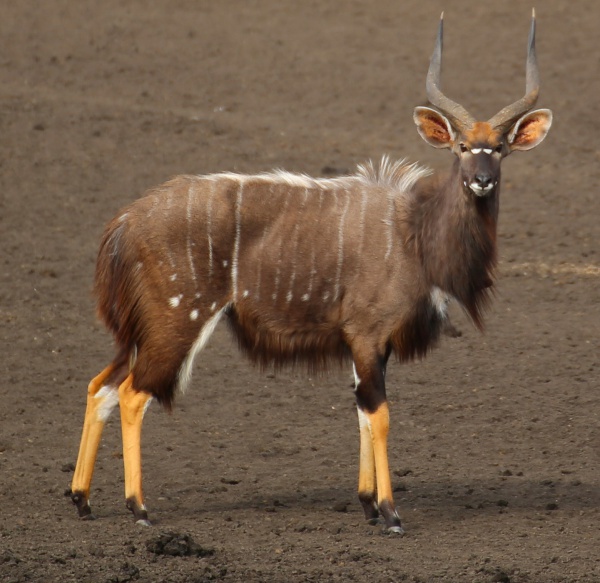Facts About Nyala
The lowland nyala, often simply referred to as the nyala, is a striking spiral-horned antelope native to southern Africa and the Bale region of Ethiopia. First described in 1849 by George French Angas, this antelope belongs to the Bovidae family and is classified within the genus Nyala or Tragelaphus.
One particularly fascinating aspect of nyalas is their pronounced sexual dimorphism, where males and females exhibit quite different appearances. Males bear yellow-tipped horns and possess darker coats compared to the lighter-colored females and juveniles. Typically, these animals are active during the early morning and late afternoon, feeding on a diverse diet of leaves, fruits, and grasses. They prefer habitats near water holes and dense woodlands and are generally cautious in nature. Nyalas often form small herds of up to ten individuals.
Nyalas can be found in countries such as Malawi, Mozambique, South Africa, Zambia, and Zimbabwe. Additionally, they have been introduced to Botswana and Namibia and reintroduced to Eswatini (formerly Swaziland). As of 1999, their population was stable at around 32,000 individuals. However, they face threats from poaching and habitat loss due to human activities.
From a taxonomic perspective, the nyala’s scientific name is Tragelaphus angasii. It represents the second taxon branching off from the tragelaphine family tree and even constitutes its own monotypic genus, Nyala. Fossil and genetic evidence indicate that the nyala has existed as a distinct species for millions of years.
Physically, nyalas are medium-sized antelopes with spiral horns and distinctive markings. Males and females differ in both size and coloration. On the health front, various studies have identified different parasites in nyalas, including helminths and blood parasites. Captive populations have also reported afflictions such as myopathy and spongiform encephalopathy.
Nyalas favor dense woodlands and have a varied diet consisting of plant materials. They breed year-round, with peak mating seasons occurring in spring and autumn. After a gestation period of about seven months, females typically give birth to a single calf. Thanks to conservation efforts, nyala populations in protected areas have remained stable.

 Zimbabwe
Zimbabwe